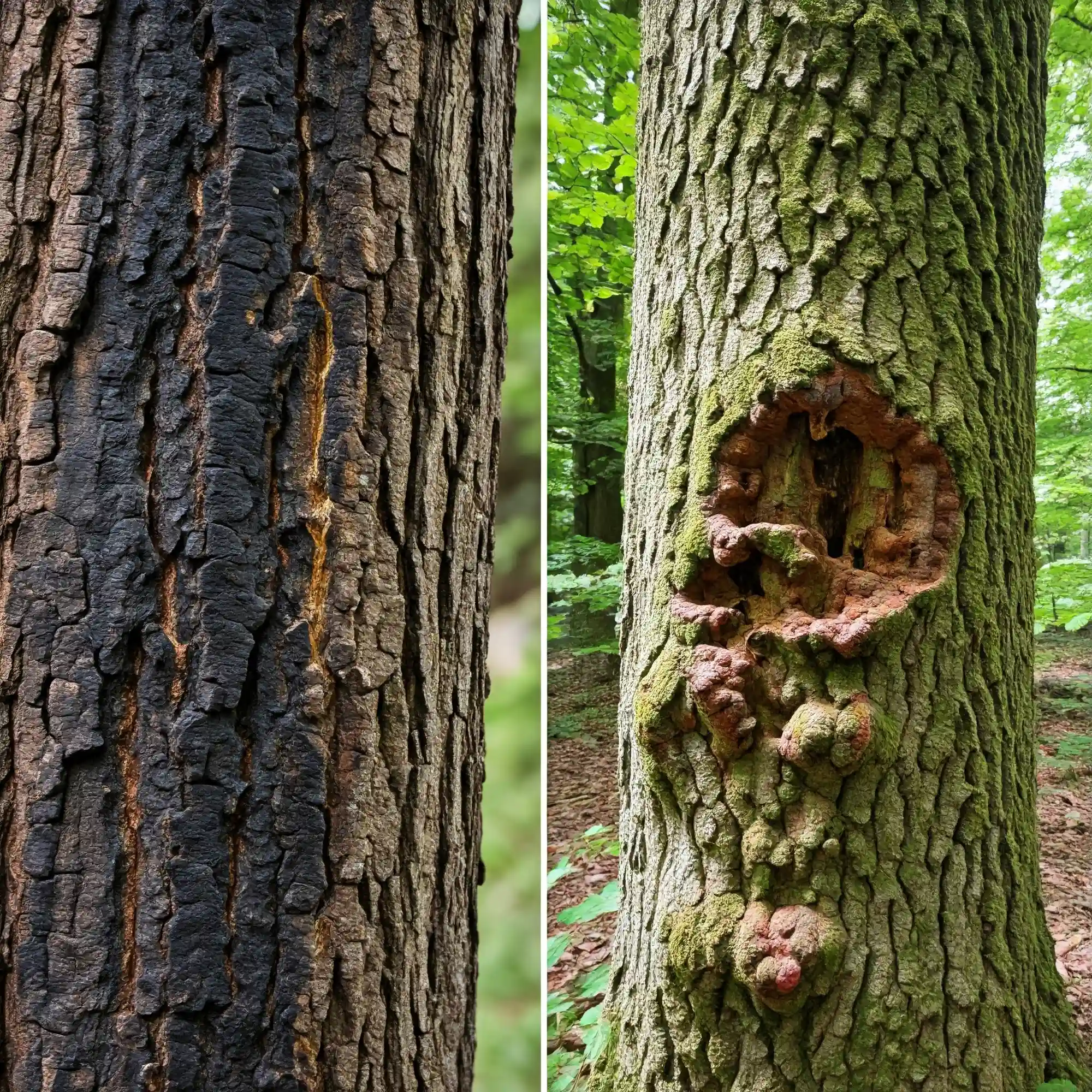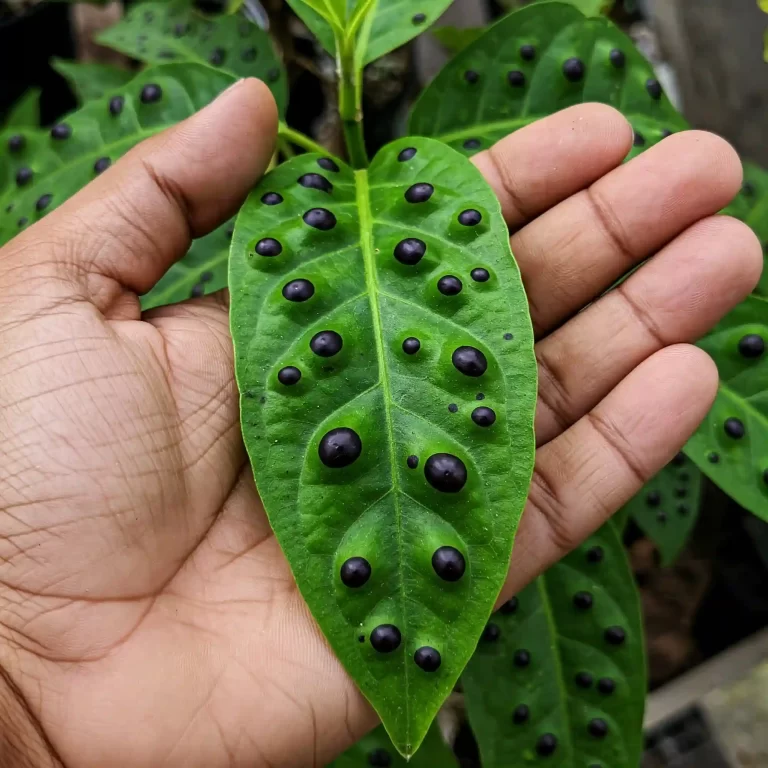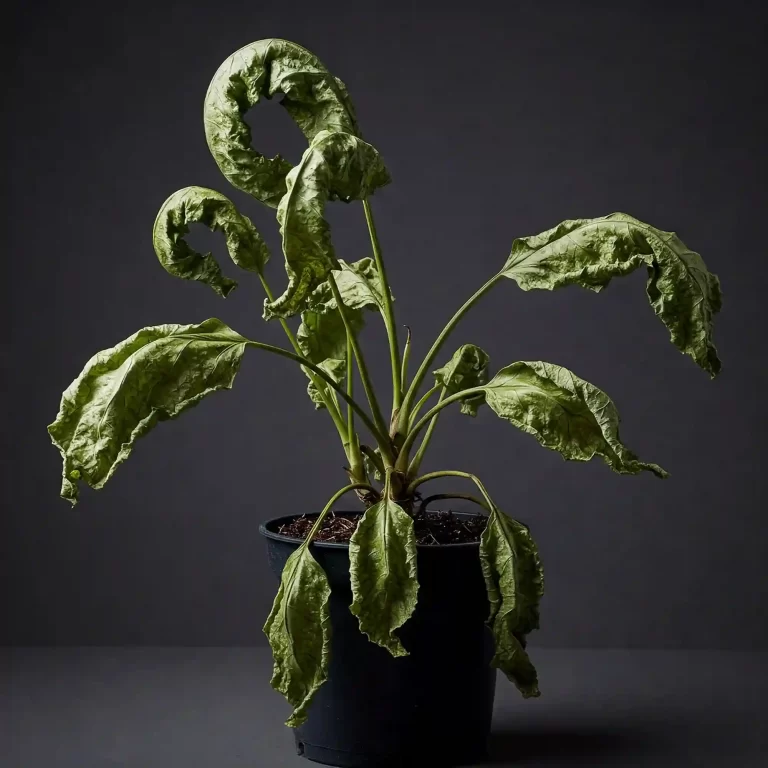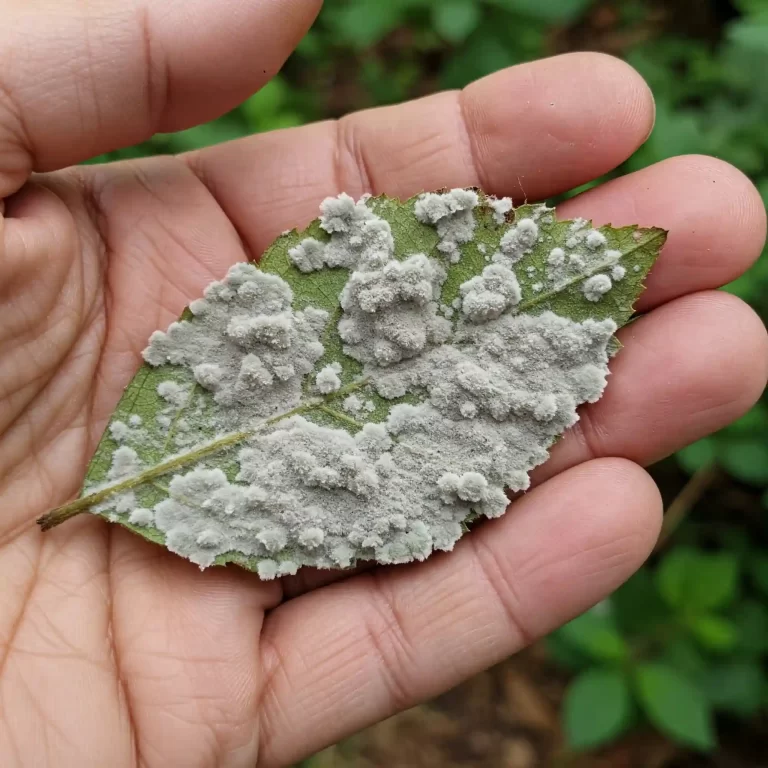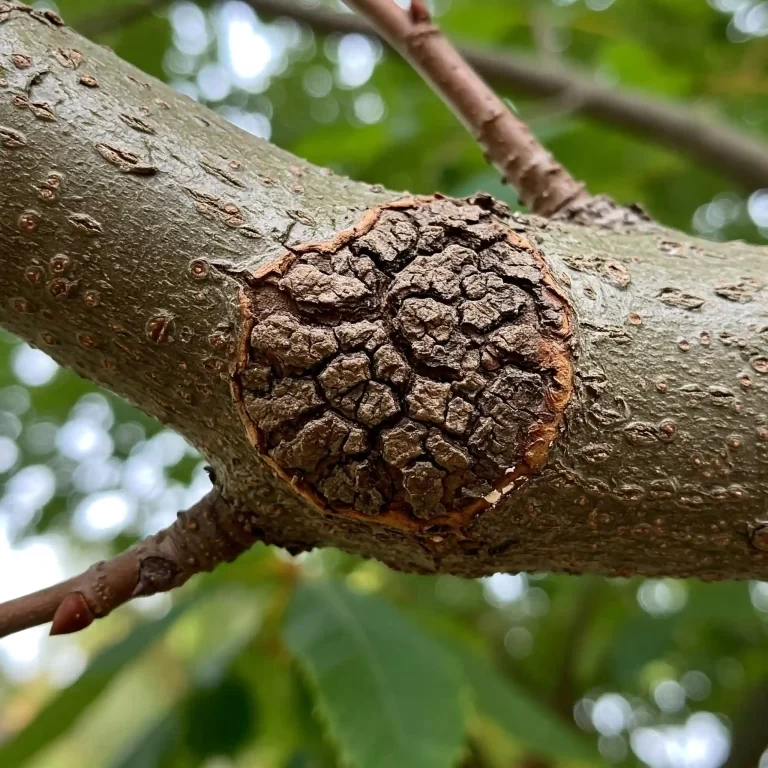Have you noticed your favorite tree or shrub looking a bit under the weather lately? Perhaps some branches are dying back, or you’ve spotted unusual cankers on the bark. As a gardener myself, I know how disheartening it is to see our plants struggling. You invest time, effort, and care into your garden, and seeing it affected by disease can be frustrating. You might be worried about losing valuable plants that you’ve nurtured for years. You may have even tried various treatments without success, leaving you feeling helpless. But there’s hope. Understanding and effectively managing Botryosphaeria dieback is key to restoring your plants’ health. This guide will equip you with the knowledge and actionable steps you need to combat this common fungal disease and protect your landscape.
What is Botryosphaeria Dieback?
Botryosphaeria dieback is a fungal disease that affects a wide range of woody plants, including trees, shrubs, and even some fruit trees. It’s caused by several species of fungi in the Botryosphaeria genus, as well as related genera like Diplodia, Fusicoccum, and Neofusicoccum. These fungi are opportunistic pathogens, meaning they often attack plants that are already stressed or weakened by other factors. From my experience, I’ve noticed that plants struggling with drought, physical injury, or poor growing conditions are particularly susceptible. You’ll often find that the disease manifests itself through distinct symptoms, which I’ll cover in more detail later. But in essence, the fungi invade the plant’s vascular system, disrupting the flow of water and nutrients, leading to dieback of branches and the formation of cankers.
The fungi that cause Botryosphaeria dieback are ubiquitous in the environment. They produce spores that can be spread by wind, rain splash, and even by contaminated pruning tools. This is why sanitation is so crucial in managing this disease. If you’re like me, you probably enjoy getting your hands dirty in the garden, but it’s crucial to remember that we can inadvertently spread plant diseases if we aren’t careful.
How Does Botryosphaeria Dieback Spread?
Understanding how Botryosphaeria dieback spreads is crucial for effective prevention and control. The disease cycle begins with the release of fungal spores. These microscopic spores are produced on infected plant tissue, such as cankers or dead branches. When conditions are favorable, such as during periods of wet weather or high humidity, these spores are released and dispersed by various means.
- Wind: Wind can carry spores over considerable distances, infecting new plants or re-infecting previously affected ones.
- Rain Splash: Raindrops can splash spores from infected tissue onto healthy leaves and branches, facilitating local spread.
- Contaminated Tools: Pruning tools, saws, and other gardening equipment can become contaminated with spores and spread the disease from one plant to another.
Once the spores land on a susceptible plant, they need an entry point to initiate infection. This is where plant stress and injuries play a significant role. Wounds from pruning, insect damage, or physical injury provide easy access for the fungi to penetrate the plant’s tissues. Similarly, plants weakened by drought, nutrient deficiencies, or other stressors are less able to defend themselves against infection.
Once inside the plant, the fungi grow and spread through the vascular system, disrupting the flow of water and nutrients. This disruption leads to the characteristic symptoms of Botryosphaeria dieback, such as branch dieback and canker formation. The fungi then produce more spores on the infected tissue, completing the disease cycle and perpetuating the spread.
Key Factors Influencing Disease Spread:
- Moisture: Wet weather and high humidity promote spore release and germination.
- Temperature: Warm temperatures favor fungal growth and development.
- Plant Stress: Stressed plants are more susceptible to infection.
- Wounds: Injuries provide entry points for the fungi.
- Sanitation: Poor sanitation practices contribute to disease spread.
By understanding these factors, you can take proactive steps to minimize the risk of Botryosphaeria dieback in your garden. This includes practicing proper watering and fertilization techniques, protecting plants from physical damage, and maintaining good sanitation practices.
Identifying Botryosphaeria Dieback: Key Symptoms
Identifying Botryosphaeria dieback early is crucial for effective management. From my years of gardening, I’ve learned that recognizing the symptoms quickly can make all the difference in saving a plant. You’ll want to keep an eye out for these key signs:
- Cankers: These are perhaps the most distinctive symptom of Botryosphaeria dieback. You’ll notice them as sunken or swollen areas on the branches, twigs, or even the trunk of the affected plant. The bark in these areas may be discolored, often turning dark brown or black. In some cases, you might even see concentric rings within the canker, a telltale sign of the fungal infection.
- Dieback of Twigs and Branches: As the name suggests, dieback is another common symptom. You’ll observe that the tips of branches and twigs begin to die back, with the leaves wilting, turning brown, and eventually falling off. This dieback can progress down the branch, potentially affecting larger limbs if left unchecked.
- Leaf Spots: While not always present, some plants may develop leaf spots as a result of Botryosphaeria infection. These spots can vary in size and shape, often appearing as small, circular lesions with a dark border.
- Wilted or Discolored Foliage: In some cases, you might notice that the leaves on affected branches appear wilted or discolored, even before significant dieback occurs. This can be an early warning sign of the disease.
Which Plants Are Most Susceptible to Botryosphaeria Dieback?
Botryosphaeria dieback can affect a wide range of woody plants, but some species are more susceptible than others. In my experience, I’ve observed that the following plants are particularly prone to this disease:
- Oak Trees: Oak trees, especially those under stress, are highly susceptible to Botryosphaeria dieback.
- Maple Trees: Maple trees, including red maple and sugar maple, can also be affected.
- Sycamore Trees: Sycamore trees are another common host for Botryosphaeria fungi.
- Apple Trees: Fruit trees like apple trees can be vulnerable, particularly in orchards where stress factors are present.
- Rose Bushes: Rose bushes, especially hybrid varieties, can be susceptible to Botryosphaeria infection.
- Rhododendrons: Rhododendrons and other members of the Ericaceae family can also be affected.
It’s important to remember that any plant can be affected by Botryosphaeria dieback if it’s under stress. This is why maintaining plant health and vigor is so crucial in preventing this disease.
Prevention: The Best Defense Against Botryosphaeria
As the old saying goes, “prevention is better than cure,” and this is especially true when it comes to Botryosphaeria dieback. While there are treatments available, preventing the disease from taking hold in the first place is always the best approach. From my years of experience, I’ve found that focusing on plant care and stress reduction is the most effective way to prevent Botryosphaeria dieback. You see, healthy, vigorous plants are much more resistant to disease than those that are stressed or weakened.
Here are some key strategies for preventing Botryosphaeria dieback in your garden:
- Proper Watering Techniques: One of the most common stressors for plants is improper watering. Overwatering can create overly moist conditions that favor fungal growth, while underwatering can weaken plants and make them more susceptible to disease. I recommend watering deeply and less frequently, allowing the soil to dry out slightly between waterings. You’ll also want to avoid wetting the foliage as much as possible, as this can create a humid environment that encourages fungal spores to germinate.
- Appropriate Fertilization: Proper fertilization is essential for maintaining plant health and vigor. You’ll want to ensure that your plants are getting the nutrients they need to thrive, but avoid over-fertilizing, as this can also stress plants. I recommend conducting a soil test to determine the specific nutrient needs of your plants and then fertilizing accordingly.
- Mulching: Mulching can be beneficial for plants in many ways, but it’s important to do it correctly. Mulch helps to retain moisture in the soil, suppress weeds, and regulate soil temperature. However, piling mulch against the trunk of a tree or shrub can create a moist environment that favors fungal growth. I recommend keeping mulch a few inches away from the base of the plant.
- Protecting Plants from Physical Damage: Wounds from pruning, insect damage, or physical injury can provide entry points for Botryosphaeria fungi. You’ll want to take care to avoid injuring your plants during gardening activities and take steps to control insect pests. I also recommend pruning during dry weather to allow wounds to heal quickly.
By following these preventive measures, you can create a healthy and thriving garden that is less susceptible to Botryosphaeria dieback.
Maintaining Plant Vigor for Botryosphaeria Protection
Maintaining plant vigor is essential for preventing Botryosphaeria dieback. Healthy, vigorous plants are more resistant to disease and can better withstand stress factors. Here are some key practices for maintaining plant vigor:
- Soil Testing and Amendments: Conducting a soil test can help you determine the specific nutrient needs of your plants. You can then amend the soil with organic matter or other amendments to improve its fertility and drainage.
- Proper Planting Techniques: Proper planting techniques are essential for establishing healthy plants. You’ll want to choose a planting site that is appropriate for the plant’s needs and ensure that the plant is planted at the correct depth.
- Regular Monitoring: Regularly monitoring your plants for signs of stress or disease can help you catch problems early on. If you notice any symptoms of Botryosphaeria dieback, take steps to address the issue immediately.
By following these practices, you can help your plants stay healthy and vigorous, making them less susceptible to Botryosphaeria dieback.
Controlling Botryosphaeria Dieback: Treatment Options
If you discover that your plants are already infected with Botryosphaeria dieback, don’t despair. While there’s no “cure” in the sense of completely eradicating the fungus from the plant, there are effective management strategies you can implement to control the disease and prevent further spread. In my experience, a combination of cultural practices and, in some cases, chemical treatments can be successful. You have to be proactive and persistent in your approach.
Here are the primary treatment options I recommend:
- Pruning Techniques for Removing Infected Branches: Pruning is a critical step in managing Botryosphaeria dieback. You’ll want to carefully prune out any infected branches, making sure to cut back to healthy wood. It’s essential to make clean cuts to promote proper healing and prevent further infection. I recommend making your cuts at a 45-degree angle, just outside the branch collar (the swollen area where the branch joins the trunk).
- Proper Sanitation: Sanitation is equally important as pruning. You’ll want to dispose of all infected plant material properly, either by burning it or bagging it and removing it from your property. Do not compost infected material, as this can spread the disease. I also recommend disinfecting your pruning tools between cuts to prevent the spread of spores from one branch to another. You can disinfect your tools by wiping them with a solution of 70% alcohol or a 10% bleach solution.
- Fungicide Application: In some cases, fungicide application may be necessary to control Botryosphaeria dieback, especially in severe infections or on highly susceptible plants. Copper-based fungicides or those containing propiconazole can be effective. However, it’s important to note that fungicides are most effective as a preventative measure or when applied early in the infection process. I recommend consulting with your local extension service or a certified arborist to determine the best fungicide and application schedule for your specific situation.
Pruning and Sanitation Best Practices for Botryosphaeria Management
Let’s delve deeper into the best practices for pruning and sanitation, as these are crucial for effective Botryosphaeria management:
- Detailed Explanation of Pruning Cuts: When pruning out infected branches, it’s important to make the correct cuts to promote healing and prevent further infection. Avoid making flush cuts (cutting directly against the trunk), as this can damage the branch collar and create an entry point for other pathogens. Instead, make your cuts just outside the branch collar, at a 45-degree angle.
- Disinfection of Pruning Tools: Disinfecting your pruning tools is essential for preventing the spread of Botryosphaeria spores. You can disinfect your tools by wiping them with a solution of 70% alcohol or a 10% bleach solution. Allow the tools to air dry completely before using them again.
- Proper Disposal of Infected Material: Properly disposing of infected plant material is crucial for preventing the spread of the disease. Do not compost infected material, as this can spread the spores. Instead, burn the infected material or bag it and remove it from your property.
By following these treatment options and best practices, you can effectively manage Botryosphaeria dieback in your garden and protect your valuable plants.
Botryosphaeria Dieback vs. Other Plant Diseases
Botryosphaeria dieback can sometimes be confused with other plant diseases, as some of the symptoms can be similar. However, there are key differences that can help you distinguish between them. In my years of gardening, I’ve seen many cases where Botryosphaeria was misdiagnosed, leading to ineffective treatment. You don’t want to make the same mistake, so let’s take a closer look at some of the diseases that can be mistaken for Botryosphaeria dieback:
- Cytospora Canker: Cytospora canker is another fungal disease that affects woody plants, particularly those under stress. Like Botryosphaeria, it can cause cankers on branches and trunks, as well as dieback of twigs and branches. However, Cytospora cankers often have a more sunken appearance and may exude a sticky, amber-colored ooze.
- Verticillium Wilt: Verticillium wilt is a soilborne fungal disease that affects a wide range of plants, including trees, shrubs, and herbaceous plants. It can cause wilting, yellowing, and dieback of foliage, similar to some of the symptoms of Botryosphaeria dieback. However, Verticillium wilt typically affects the entire plant, while Botryosphaeria dieback is often more localized to specific branches or areas of the plant.
Key Differences Between Botryosphaeria Dieback and Other Diseases
| Feature | Botryosphaeria Dieback | Cytospora Canker | Verticillium Wilt |
| Cause | Several species of Botryosphaeria fungi | Cytospora fungi | Verticillium fungi |
| Symptoms | Cankers, dieback of twigs and branches, sometimes leaf spots | Sunken cankers, dieback, amber-colored ooze | Wilting, yellowing, dieback of foliage |
| Affected Plant Area | Often localized to specific branches or areas of the plant | Can affect entire branches or the main trunk | Typically affects the entire plant |
| Contributing Factors | Plant stress, wounds | Plant stress, wounds | Soilborne fungus, can persist in the soil for years |
By understanding these key differences, you can accurately diagnose Botryosphaeria dieback and implement the appropriate management strategies.
Frequently Asked Questions (FAQ)
I’ve compiled a list of frequently asked questions about Botryosphaeria dieback to address some common concerns you might have. I’ve found that gardeners often have similar questions when dealing with this disease, so I hope this section is particularly helpful for you.
- Q: How to identify Botryosphaeria dieback on maple trees?
- A: Look for sunken cankers on branches and dieback of twigs, especially after periods of stress. You might also notice discolored bark around the cankers.
- Q: Best treatment for Botryosphaeria dieback on apple trees?
- A: Prune out infected branches during dry weather, making sure to cut back to healthy wood. Apply a copper-based fungicide during dormancy for added protection.
- Q: Are there organic treatments for Botryosphaeria dieback in gardens?
- A: While there are no fully effective organic fungicides for Botryosphaeria dieback, focusing on plant care and stress reduction can significantly improve plant health and resistance to infection.
- Q: What causes branch dieback from Botryosphaeria in stressed trees?
- A: Drought, injury, or other stressors weaken trees, making them more susceptible to Botryosphaeria infection. The fungus then disrupts the flow of water and nutrients, leading to branch dieback.
- Q: How to distinguish Botryosphaeria canker from other tree diseases?
- A: Botryosphaeria cankers are often darker and more sunken than other cankers and may have small black fruiting bodies present. Consider the host plant and other symptoms to differentiate it from diseases like Cytospora canker or Verticillium wilt.
- Q: Is Botryosphaeria dieback fatal to trees?
- A: While Botryosphaeria dieback can cause significant damage and even kill individual branches, it’s not always fatal to the entire tree, especially if proper management strategies are implemented. However, repeated infections can weaken the tree and make it more susceptible to other pests and diseases.
- Q: Can Botryosphaeria dieback spread to other plants in my garden?
- A: Yes, Botryosphaeria spores can spread to other susceptible plants through wind, rain splash, and contaminated pruning tools. This is why sanitation and proper pruning practices are so important.
- Q: When is the best time to prune infected branches?
- A: The best time to prune infected branches is during dry weather, preferably in late winter or early spring before new growth begins. This allows the wounds to heal quickly and reduces the risk of further infection.
- Q: How can I prevent Botryosphaeria dieback in my newly planted trees?
- A: Choose healthy, disease-free plants from reputable nurseries. Plant them in appropriate locations with well-draining soil. Provide proper care, including watering, fertilization, and mulching, to minimize stress.
- Q: Where can I get more information about Botryosphaeria dieback?
- A: Your local university extension service or a certified arborist can provide valuable information and resources on Botryosphaeria dieback and other plant diseases.
By addressing these frequently asked questions, I hope I’ve provided you with a clearer understanding of Botryosphaeria dieback and how to manage it effectively.
Conclusion: Protecting Your Garden from Botryosphaeria Dieback
We’ve covered a lot of ground in this comprehensive guide to Botryosphaeria dieback. As we wrap up, I want to reiterate the key takeaways and leave you with some final thoughts. You see, protecting your garden from this fungal disease requires a proactive and consistent approach.
Key Takeaways:
- Early detection is crucial. Recognizing the symptoms of Botryosphaeria dieback early on is essential for effective management. Keep a close eye on your plants for cankers, dieback, and other signs of stress.
- Prevention is the best defense. Maintaining plant health and vigor through proper watering, fertilization, and mulching can significantly reduce the risk of infection.
- Sanitation is essential. Properly disposing of infected plant material and disinfecting pruning tools can help prevent the spread of the disease.
- Pruning is a key management tool. Pruning out infected branches correctly can help control the disease and prevent further damage.
- Fungicides can be helpful in some cases. While not always necessary, fungicides can be effective in managing severe infections or protecting highly susceptible plants.
Final Thoughts:
Botryosphaeria dieback can be a challenging disease to manage, but with the right knowledge and tools, you can protect your valuable plants. Remember to focus on prevention, early detection, and proper sanitation practices. By taking a proactive approach, you can create a healthy and thriving garden that is less susceptible to this fungal disease.
I encourage you to continue learning about plant health and disease management. There are many resources available, including your local university extension service, online gardening forums, and books on plant pathology. By staying informed and proactive, you can create a beautiful and healthy garden that you can enjoy for years to come.
Remember, gardening is a journey of continuous learning. Don’t be discouraged if you encounter challenges along the way. With patience, persistence, and a little bit of knowledge, you can overcome any obstacle and create the garden of your dreams.
